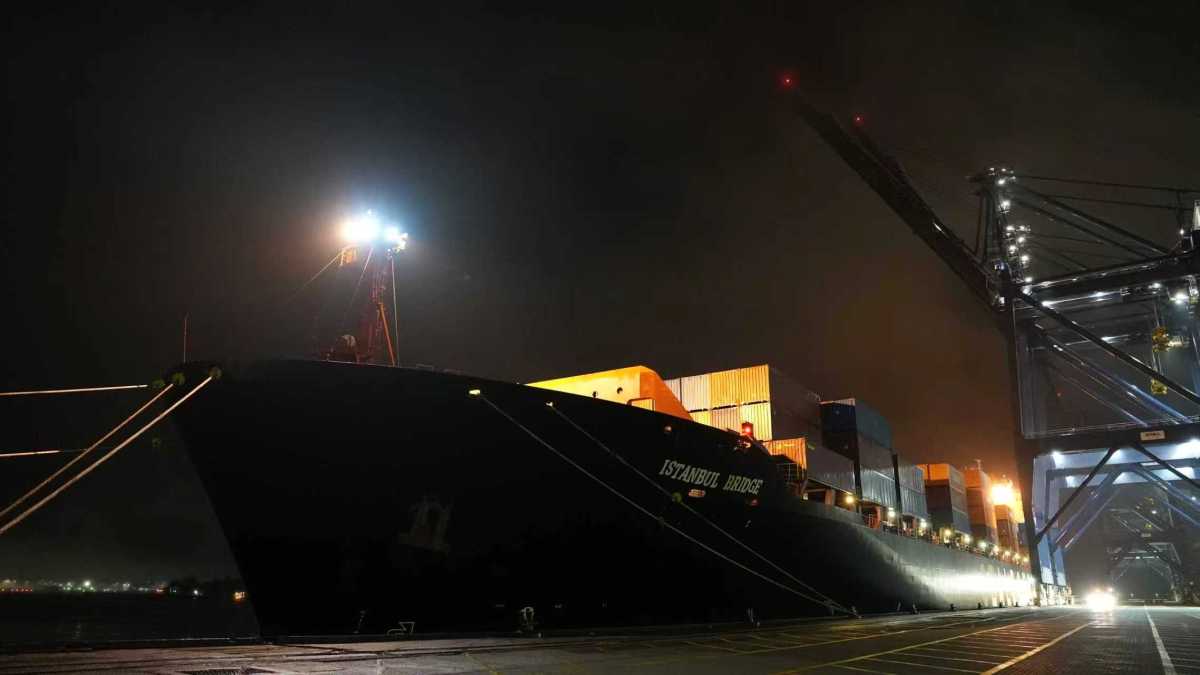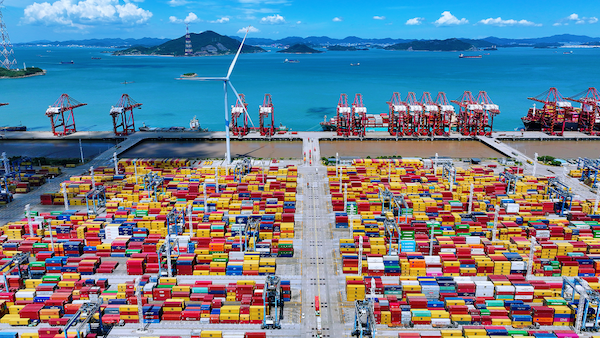China-Europe Arctic route to enter regular summer operation in 2026
After a 26 day voyage, the world's first China-Europe Arctic Express Route saw its first container vessel, the Istanbul Bridge, arrive at the northern Polish port of Gdansk, marking the successful completion of the maiden voyage of the first direct China-Europe route via the Arctic, the Xinhua News Agency reported. The operator plans to establish regular summer voyages along the route by 2026, the Global Times learned on Monday.
The vessel carried 4,890 containers loaded with photovoltaic modules, energy storage systems, and cross-border e-commerce goods. It sailed from Ningbo-Zhoushan Port in East China's Zhejiang Province on September 23 and made stops at the Port of Felixstowe in the UK and the Port of Hamburg in Germany before docking in Gdansk. After operations in Gdansk, the ship has departed to depart for the Netherlands on Sunday evening.
Li Xiaobin, chief operating officer of Sea Legend Shipping, which runs the service, told the Global Times on Monday that the Arctic route provides a significant time advantage over traditional alternatives.
It serves as an emerging international shipping route connecting East Asia and Europe and offers great value in optimizing the global supply chain and promoting economic and trade cooperation along the route, according to Xinhua.
"This is the world's first container route through the Arctic specifically designed for cross-border e-commerce and high value-added goods," said an official of China's Ministry of Transport. "It is also a major achievement in the development of the 'Ice Silk Road' under the Belt and Road Initiative," the official added, the People's Daily reported.
The China-Europe Arctic Express route takes the Arctic's Northeast Passage directly to Europe, significantly reducing travel time compared with traditional routes - about 40 days via the Suez Canal and 50 days via the Cape of Good Hope. The Istanbul Bridge reached its first European stop, Felixstowe in Britain, in just 20 days, comparable to or faster than the China-Europe freight train, which takes about 25 days, Xinhua reported.
The relatively mild sea conditions along the Northeast Passage make the route well-suited to temperature sensitive and time critical cargoes, and could help boost exports of China's "new three" - lithium electronics, photovoltaic products and new-energy vehicles. The company estimated that faster voyages via the Arctic could cut inventory holdings by about 40 percent, easing capital tied up in supply chains, the company told the Global Times on Monday.
Li said that the company plans to expand its express service network to Eastern Europe during the non navigable period of winter, which will mean combining Suez route ocean shipping with rail links to reach China Europe rail terminals within roughly 25 days.
The operator plans to establish regular summer voyages along the route by 2026.
"We will initially realize fixed route arrangement (weekly or biweekly) in the summer navigable areas, and improve the specifications and design of new ice-reinforced ships based on the practice of navigation, strengthen the construction of the container fleet through ice areas, and strive to realize the plan of year-round navigation of the China-Europe Arctic route," Li said.
To overcome key challenges encountered during this maiden voyage, Li said that the company had started preparing for the official commercial trial operation three years ago. During the process, it encountered problems such as upgrading ship hardware and equipment, personnel training and certification, and the accuracy of weather and navigation forecasts. With the policy and technical support of relevant departments, these problems were properly resolved, laying a solid foundation for the smooth trial voyage, he added.
The company also highlighted environmental benefits, saying that the shorter Northeast Passage voyage could reduce carbon emissions by roughly 30 percent compared with the Suez route and by about 50 percent versus the Cape route.
Industry experts said that the China-Europe Arctic Express route, as the third China-Europe maritime route, is faster and more efficient. It will facilitate deeper integration between the Yangtze River Delta's high-end manufacturing and new-energy industries and the European market. This will further advance the operation of domestic and international dual circulation and add more dynamism to the country's economic development.
China's total trade with the EU reached 3.35 trillion yuan ($465.3 billion) from January to July, up 3.9 percent year-on-year and accounting for 13 percent of the country's total foreign trade, according to data from the General Administration of Customs.

 Ningbo's loong legacy
Ningbo's loong legacy
 Voices from London on China's new Arctic trade route
Voices from London on China's new Arctic trade route
 A look at China's economic data in August
A look at China's economic data in August



